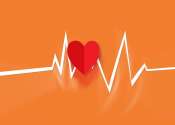Mapping the hidden connections between diseases
A new study led by UCL researchers has identified patterns in how common health conditions occur together in the same individuals, using data from 4 million patients in England.
Dec 2, 2022
0
1532
A new study led by UCL researchers has identified patterns in how common health conditions occur together in the same individuals, using data from 4 million patients in England.
Dec 2, 2022
0
1532

Cleveland Clinic researchers have identified a common diabetes medication, metformin, as a possible treatment for atrial fibrillation.
Oct 11, 2022
0
808

Taking omega-3 fatty acids and vitamin D3 supplements does not neither increase nor decrease the risk of developing atrial fibrillation, according to late-breaking research presented today at the American Heart Association's ...
Nov 13, 2020
0
253

Eating several servings of nuts every week may help lower the risk of developing the heart rhythm irregularity, atrial fibrillation, also known as heart flutter, finds research published online in the journal Heart.
Apr 16, 2018
0
2762

Adults who reported drinking two liters (about 67 ounces) or more of sugar- or artificially sweetened drinks per week had a higher risk of an irregular heart rhythm known as atrial fibrillation than adults who drank fewer ...
Mar 5, 2024
0
138

At least 2.7 million people in the U.S. are living with atrial fibrillation, according to the American Heart Association. And because the risk of developing it increases with age and people are living longer, medical researchers ...
Jul 25, 2022
0
35

One in four strokes – Australia's second largest cause of death and disability – is caused by atrial fibrillation (AF) or irregular heartbeat. Those strokes will be often larger, more severe and with worse outcomes, but ...
Sep 2, 2016
0
3

Patients with atrial fibrillation are at risk of forming clots that can migrate to the brain and cause dangerous strokes; these can be prevented by chronic administration of blood-thinning drugs (anticoagulants). Introduced ...
Dec 20, 2021
0
4

Consumer electronics provide a novel route to screen for atrial arrhythmias. A study offered smartphone and wearable-based continuous arrhythmia screening to older adults without known atrial fibrillation. Atrial arrhythmia ...
Nov 24, 2022
0
30

Deaths related to atrial fibrillation appear to be on the rise, especially among younger adults, a new study suggests.
Jul 29, 2021
0
216

Atrial fibrillation (AF or A-fib) is the most common cardiac arrhythmia (irregular heart beat). It may cause no symptoms, but it is often associated with palpitations, fainting, chest pain, or congestive heart failure. AF increases the risk of stroke; the degree of stroke risk can be up to seven times that of the average population, depending on the presence of additional risk factors (such as high blood pressure). It may be identified clinically when taking a pulse, and the presence of AF can be confirmed with an electrocardiogram (ECG or EKG) which demonstrates the absence of P waves together with an irregular ventricular rate.
In AF, the normal regular electrical impulses generated by the sinoatrial node are overwhelmed by disorganized electrical impulses usually originating in the roots of the pulmonary veins, leading to irregular conduction of impulses to the ventricles which generate the heartbeat. AF may occur in episodes lasting from minutes to days ("paroxysmal"), or be permanent in nature. A number of medical conditions increases the risk of AF, particularly mitral stenosis (narrowing of the mitral valve of the heart).
Atrial fibrillation may be treated with medications to either slow the heart rate to a normal range ("rate control") or revert the heart rhythm back to normal ("rhythm control"). Synchronized electrical cardioversion can be used to convert AF to a normal heart rhythm. Surgical and catheter-based therapies may be used to prevent recurrence of AF in certain individuals. People with AF often take anticoagulants such as warfarin to protect them from stroke, depending on the calculated risk. The prevalence of AF in a population increases with age, with 8% of people over 80 having AF. Chronic AF leads to a small increase in the risk of death. A third of all strokes are caused by AF.
This text uses material from Wikipedia licensed under CC BY-SA